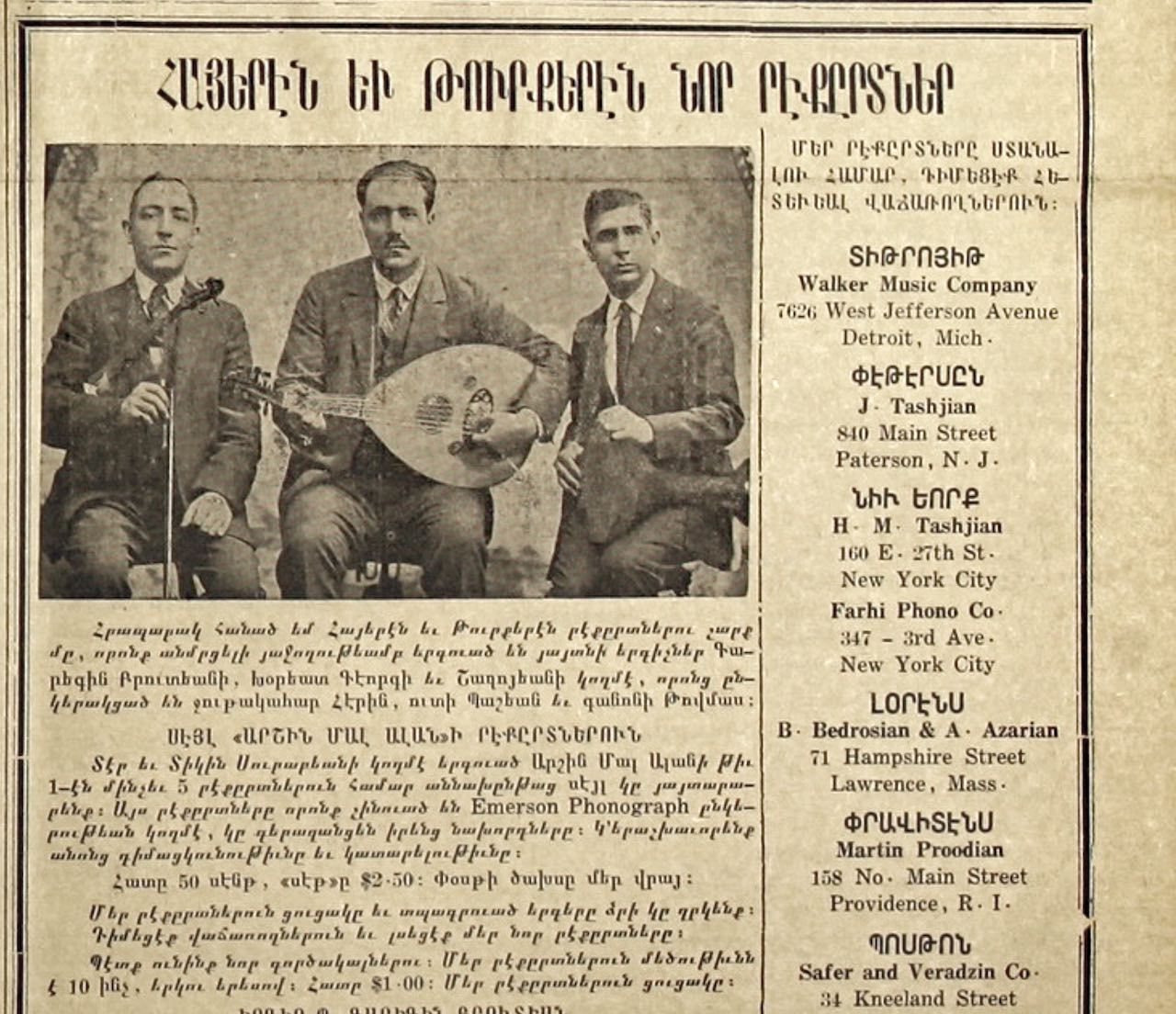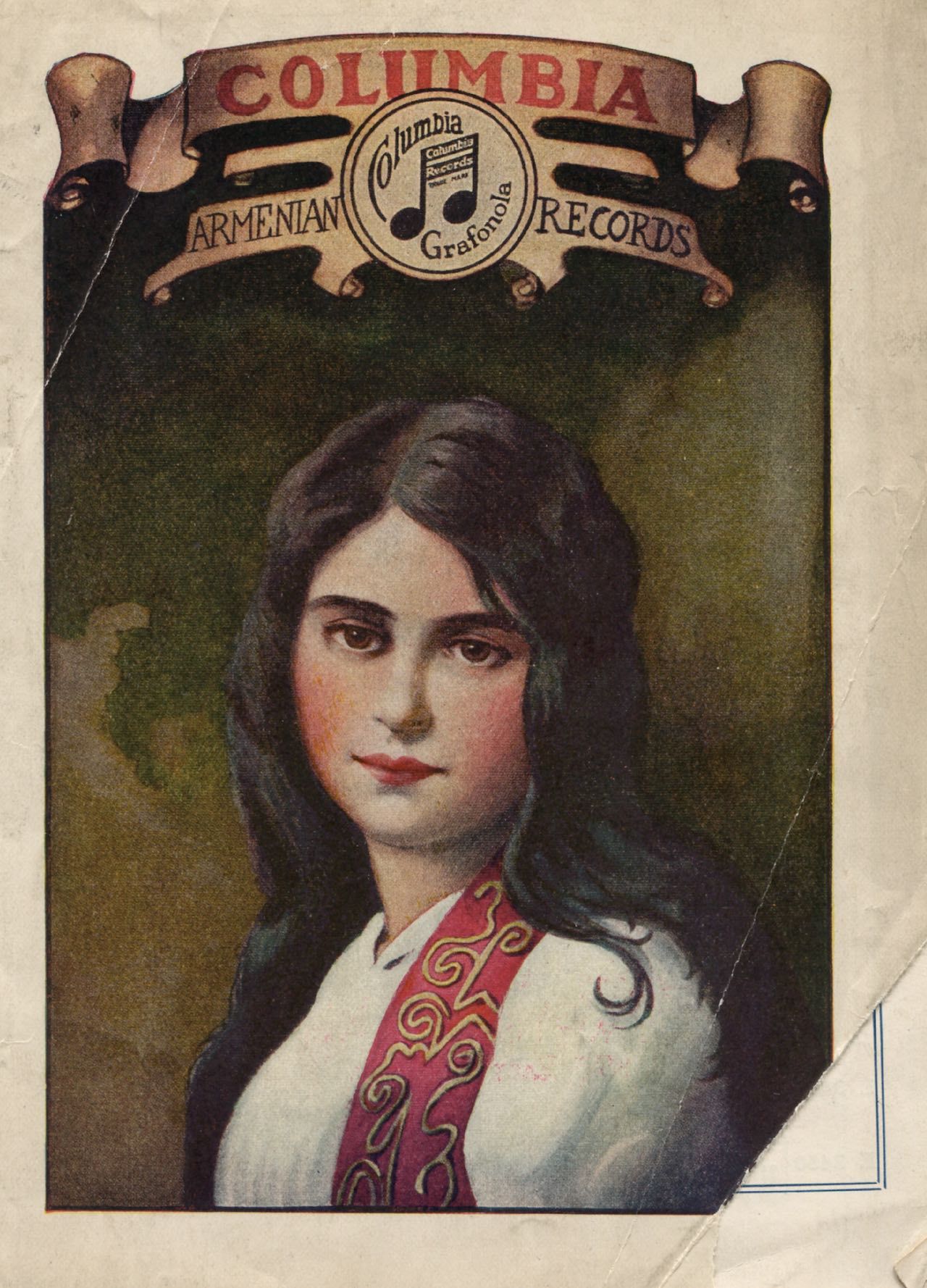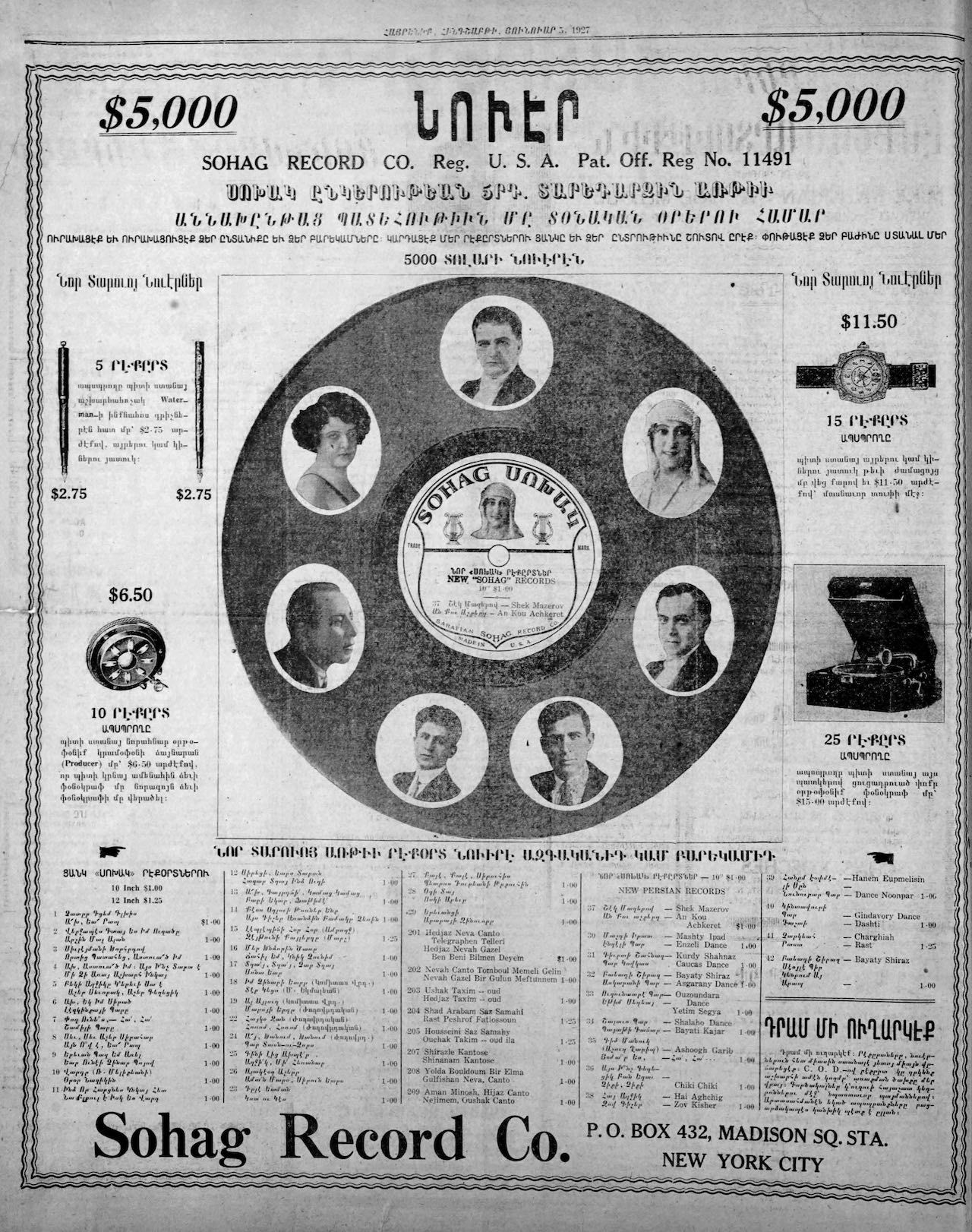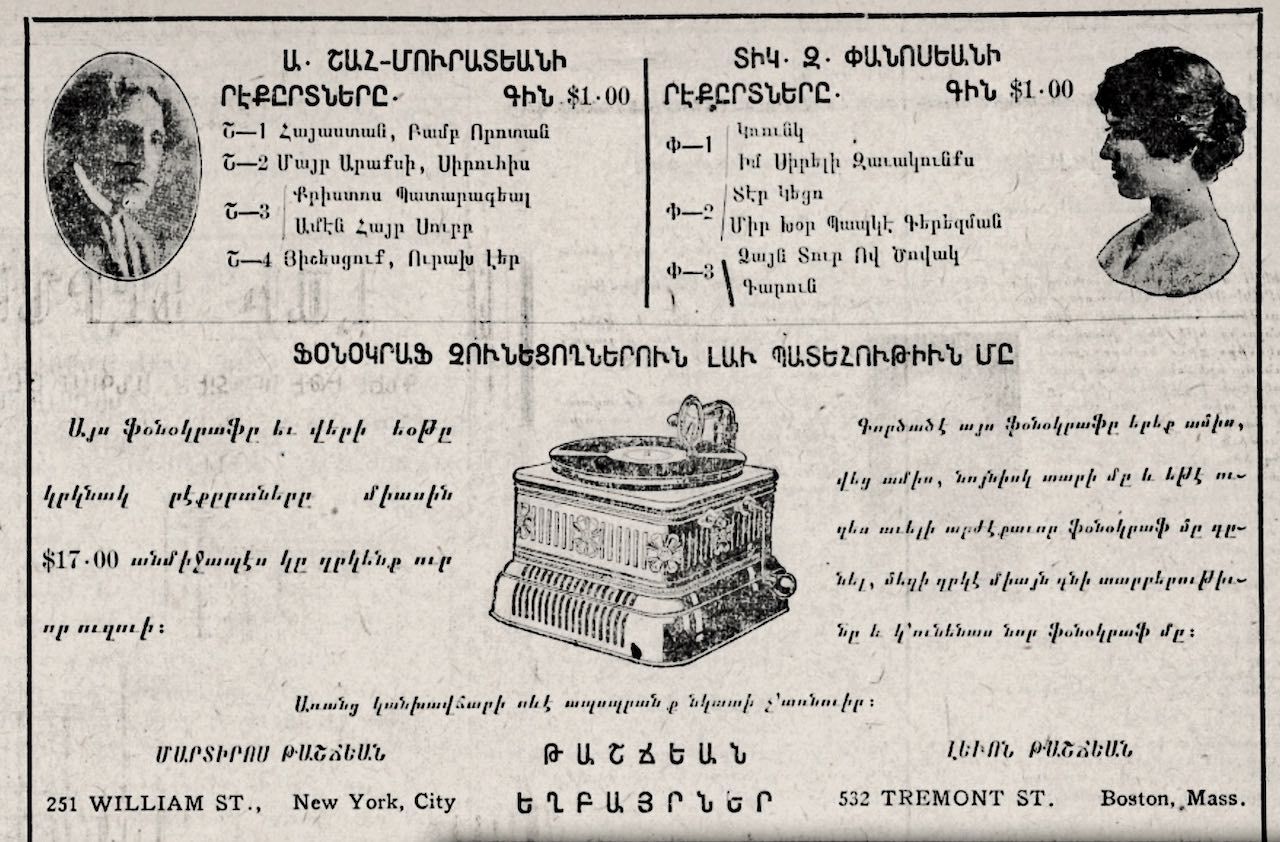Armenian 78s in America: A Discography

Armenian 78s in America: A Discography will be the first ever Armenian discography. Its publication will be a boon to the Armenian community’s ability to hear its history and learn the names of the people who kept Armenian music alive in diaspora, saving their legacy from obscurity. Beyond that, it allows members of the Armenian community to see how their ancestors adapted to a new landscape, successfully producing a massive artistic output without their traditional instruments and social networks.
With a century of combined experience, Ara Dinkjian and Harout Arakelian’s insights into Armenian 78s creates a critical tool to revitalize overlooked Armenian songs, their dances, and in some instances, the dialects early Armenian Americans spoke. The impact of these opportunities is impossible to predict. By systematically cataloging and analyzing these recordings, the discography has the potential to uncover previously unnoticed trends and connections within the realm of Armenian music, offering new narratives and perspectives.

This work brings to light an often-omitted contribution to the American recording industry. It is a history that, although particular to the Armenian community, will touch many. Through the discography’s specificity, it tells a universal American story: one of immigrants trying to maintain an identity in an entirely new place, of children and grandchildren bearing their ancestral culture forward, while innovating to fit into a diverse and ever-changing society. Readers outside of the Armenian community will recognize, appreciate, and relate to this history. There are very few people in the world who have not been touched by music made in America. Tracing the musical journey of the first Armenian American immigrants puts them in conversation with the artists from all the other 19th and 20th century American immigrant communities, making the story of one of the most legendary recording industries a little more complete.

More than a catalogue, Armenian 78s in America: A Discography delves far beyond the previous works of its authors, featuring over 200 artist entries and documenting more than 1,800 recordings pressed in the United States featuring Armenian musicians. Alongside the discographic information, the volume includes two articles: The first article explains the process of preparing the volume and provides a guide on how to navigate the discography. The second article sheds light on Armenian American’s unique experiences and contributions to the music industry.

The publication will include statistics such as a breakdown of records by location and a spread featuring labels and photographs. Indexes of artist names, song titles, and record label names will also feature in the discography, ensuring easy access to information and providing an “official” spelling for names that may have varying spellings across records. There will be a section for unlisted instrumentation which does not appear on the 78 record or original catalogue, but whose sounds Ara Dinkjian trained himself to recognize. The authors will incorporate biographical information of the musicians, including the dialects in which they sang, when available.
MiC will publish this comprehensive discography as both a physical book and an online database, featuring all commercially available sound recordings by Armenian musicians produced during the 78-rpm era, spanning from the early 1900s through the late 1950s. By making physical copies free to all Armenian churches, community centers, and museums, MiC guarantees access to the Armenian community so that the musicians’ songs continue to play a role in the lives of their descendants.
Meet the Project Managers

Ara Dinkjian is an Armenian composer, musician, collector, and historian, born in America. Ara’s career spans many years and takes many shapes. He grew up performing with his father, Onnik Dinkjian, a renowned folk and liturgical singer. Part of his early career involved playing organ every Sunday at his Armenian church. He continued to do so for forty years. Ara’s childhood experiences gave him a strong foundation to explore many musical genres and traditions without sacrificing his Armenian perspective. His band, Night Ark, was an international sensation, and recorded four albums for RCA/BMG and Universal/PolyGram. Ara’s music and compositions continue to inspire artists around the world. His melodies have appeared everywhere from the Olympic ceremonies to the Jewish High Holidays.
As a collector and historian, Ara spent fifty years researching and assembling an archive of over 6,000 Armenian and Turkish 78rpm records. He is now in the process of having the collection acquired by the United States Library of Congress for permanent conservatorship. These records serve as inspiration across his vast recording career, his compositions, and his community lectures. Ara hopes to continue to use 78s to educate the Armenian community and beyond, enriching the cultural lives of people across cultures.

Harout Arakelian is a video editor, music collector, and researcher based in Los Angeles, California. As a community historian, Harout dedicates himself to preserving historic Armenian sound recordings from the 78-rpm era (1898-1956). He is a leading expert in this field, delivering lectures such as “Armenian Music of America” and “Music Without Borders”. Harout served as a guest lecturer at UCLA and as a presenter for the Armenian Institute in London. He contributes to several publications, including the LA Times and California Courier. Harout co-authored the biography “Zabelle Panosian - I Am Servant of Your Voice” published in 2022. He delivered a presentation on the long-lost first Armenian recordings in America titled “The Tashjian Brothers and the Birth of Armenian Recordings” to launch the Sound Archive at the Armenian Museum of America, where he also contributes monthly profiles highlighting musicians from the 78-rpm era. Currently, he is working on his second publication. Harout’s extensive knowledge has brought greater understanding and enthusiasm to the world of Armenian recordings and their history.